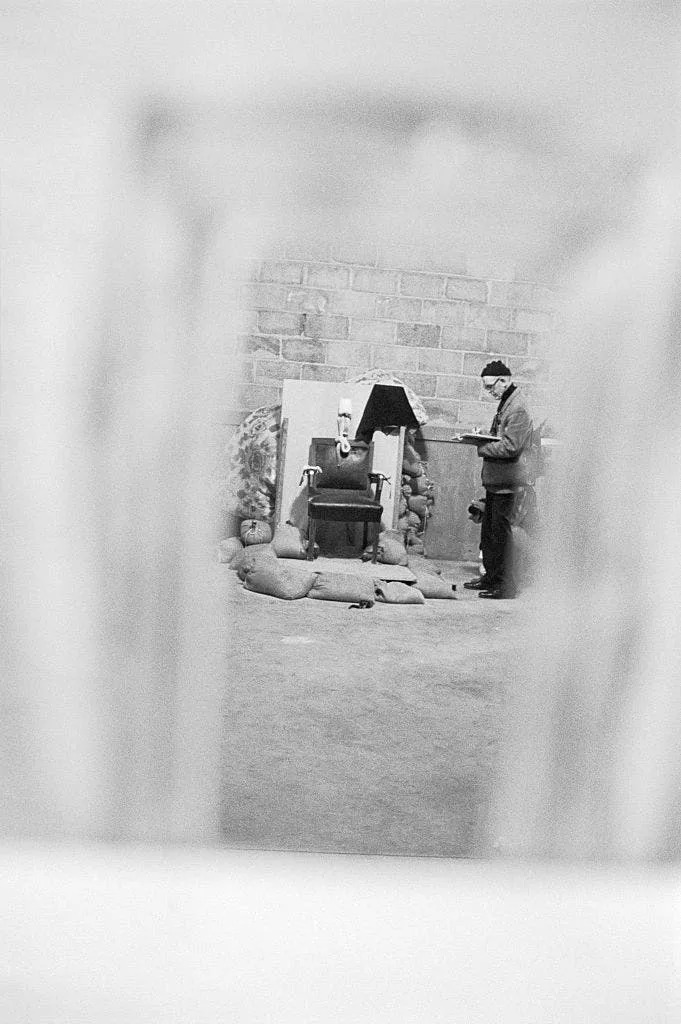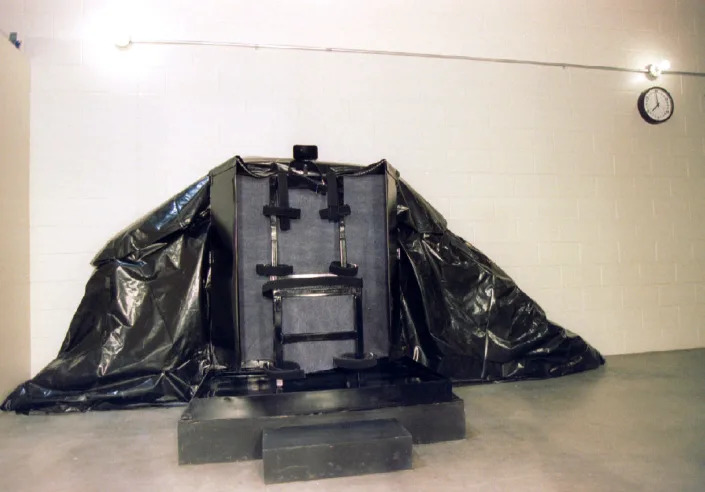As Idaho looks to resurrect the firing squad as an acceptable alternative to lethal injection for prisoners sentenced to death, a shortage of necessary drugs and a poor track record over the past four decades has experts pointing out the shortcomings of the “modern” and “clinical” practice used in most states that still carry out capital punishment.
This from yahoo.com.

If signed into law, Idaho’s bill could impact the state’s eight current death row inmates and possibly the future of student stabbings suspect Bryan Kohberger. He could face death if convicted of any one of four first-degree murder charges he faces in the November deaths of Madison Mogen, Kaylee Goncalves, Ethan Chapin or Xana Kernodle.
Fordham Law School professor Deborah Denno, a leading expert on the death penalty in the United States, said:
The firing squad is the quickest, surest, and most error-free and the only technique for which we have skilled and trained professionals.
Denno, who has studied execution methods for decades, said lethal injection procedures are in a “sorry state” even today, decades after the process became an option in the early 1980s.
She told Fox News Digital:
Within the past few years, we’ve had three people survive lethal injection executions when they were supposed to die. And this is after over two hours of people trying to kill them and the state basically saying, ‘You’ve got to stop.’
Executioners have had trouble accessing the veins, drugs are scarce, and other things can go wrong.
It happened to Alabama death row inmate Kenneth Eugene Smith in November, the second time in that state alone in as many months.
The injection process is also shrouded in secrecy, while firing squads are, by nature, more transparent, with multiple executioners in full view of the witnesses.
While Denno supports the bill in Idaho, she suggested:
[T]aking it a step further and, instead of making the firing squad an available alternative when lethal injections cannot be performed, giving death row inmates the choice between the two.
Noting that Tennessee inmates have begun choosing electrocution over lethal injection when given the choice, she told Fox News Digital:
I have a hunch that more inmates would choose firing squad.
She explained:
In Tennessee, that’s quite a statement, because electrocution has had so many horrible problems associated with it—people’s heads burning, their hair burning, eyes popping out, etc.
She continued:
The firing squad also meets the Supreme Court’s prerequisite as a “known and available alternative,” established in the landmark Glossip v. Gross case.
According to her university bio:
Denno, who has researched methods of execution for the past three decades, has written seven articles cited by the Supreme Court on the topic.
The researcher made clear she is not “pro-death penalty.” She’s “death penalty agnostic.”
She explained:
Only four states have an option for the firing squad, although its use is extremely rare, according to the Death Penalty Information Center, which also in December described lethal injections as the “most-botched” execution method.
Among Mississippi, Oklahoma, Utah, and South Carolina, only three prisoners have been put to death by firing squad since 1976. They were all carried out in Utah.
The first was Gary Gilmore, who, after an 11-year prison sentence for robbery, was released and robbed and killed a gas station clerk and motel manager in 1976. Six months later, after a hunger strike and failed appeal, he died by firing squad.

Point of the Mountain, Utah: An executioner’s view through the canvas screen that shielded the firing squad from Gary Gilmore. Five riflemen fired four bullets through the slits in the screen at Gilmore, who sat in the chair viewed through the screen.
Next was John Albert Taylor, who raped and strangled an 11-year-old girl in 1989. He chose a firing squad over lethal injection because he was worried about “flipping around like a fish out of water,” The Associated Press reported at the time.

The chair in which John Albert Taylor was strapped during his scheduled execution by a firing squad is shown Jan. 24, 1996, at Unitas State Prison in Utah. Taylor, who was scheduled to be executed shortly after midnight Jan. 26, 1996, chose to die by a firing squad of five men.
Then came Ronnie Lee Gardner in 2010. While in court for a bartender’s death, he killed a lawyer and shot a bailiff in a failed attempt to escape custody.

The execution chamber at the Utah State Prison after Ronnie Lee Gardner was executed by firing squad Friday, June 18, 2010. The bullet holes are visible in the wood panel behind the chair.
Matt Mangino, a former Lawrence County, Pennsylvania, district attorney who also previously sat on the state’s parole board, said:
That was the last execution by firing squad in the U.S.
He now works in private practice and wrote a book on the issue, The Executioner’s Toll, 2010.
Mangino told Fox News Digital:
Most states that had the firing squad moved away from that form of execution because of the ‘Wild West’ mentality it portrayed. Some say lethal injection is clinical or sanitary, the firing squad is ‘uncivilized.’
But injections can be gruesome too, experts say. And while there is less visible blood, Mangino noted that one drug in the common three-drug cocktail is a paralytic meant to keep the condemned still for witnesses’ comfort, not to ease the pain of death.
Mangino said:
It’s unsightly and uncomfortable for witnesses to see someone gyrating and moving around as they’re going through the throes of death during lethal injection.
Idaho’s bill passed with a veto-proof majority, but it was not without opposition.
The bill passed the state House 50-15-5 earlier this month and the Senate 24-11 on Monday before it was sent to Gov. Brad Little’s desk.
The bill’s House sponsor, Rep. Bruce Skaug, R-Nampa, said:
Upon signature of the governor, the state may now more likely carry out justice, as determined by our judicial system, against those who have committed first-degree murder.
Final thoughts: There are those who argue that the people assigned to the firing squad, the witnesses, and the cleanup crew are all at risk of becoming traumatized by the experience. However, witnesses are there voluntarily and it is unlikely law enforcement and the cleanup crew are worried about PTSD.
And there are those who say that execution by way of firing squad is antiquated and inhumane, however, murder of innocent victims is even more so inhumane, and an ounce of deterrence will certainly offset a pound of inhumanity any day.


![WOKE PROTESTERS Blocking Hwy Are STUNNED When Angry Italians Exit Their Vehicles and DRAG Them Off the Road [VIDEO]](https://i0.wp.com/defconnews.com/wp-content/uploads/2022/06/Italian-Tourists-Confrint-Road-Protesters-2.jpg?resize=120%2C120&ssl=1)

